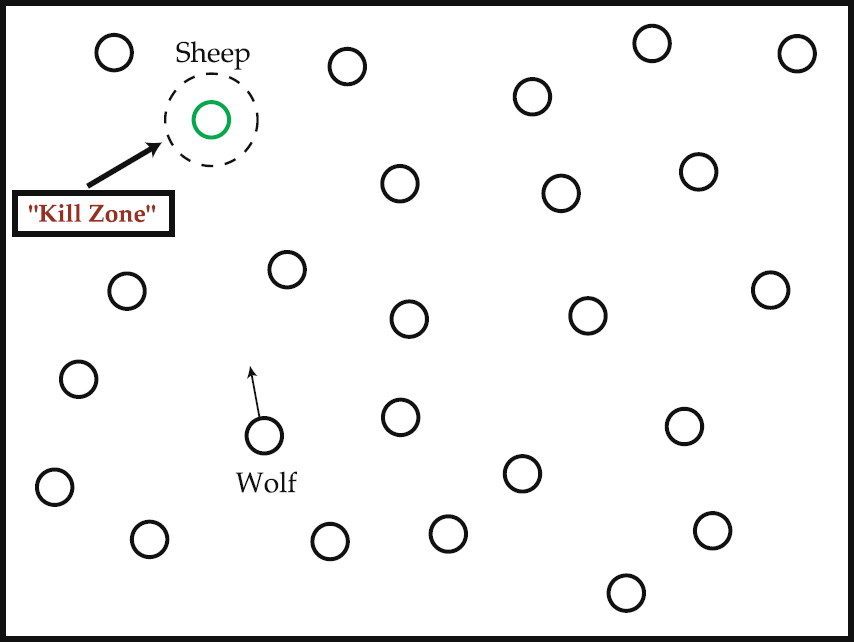The psychophysics of chasing: A case study in the perception of animacy

Abstract
Psychologists have long been captivated by the perception of animacy – the fact that even simple moving shapes may appear to engage in animate, intentional, and goal-directed movements. Here we report several new types of studies of a particularly salient form of perceived animacy: chasing, in which one shape (the ‘wolf’) pursues another shape (‘the sheep’). We first demonstrate two new cues to perceived chasing – chasing subtlety (the degree to which the wolf deviates from perfectly ‘heat-seeking’ pursuit) and directionality (whether and how the shapes ‘face’ each other). We then use these cues to show how it is possible to assess the objective accuracy of such percepts, and to distinguish the immediate perception of chasing from those more subtle (but nevertheless real) types of ‘stalking’ that cannot be readily perceived. We also report several methodological advances. Previous studies of the perception of animacy have faced two major challenges: (a) it is difficult to measure perceived animacy with quantitative precision; and (b) task demands make it difficult to distinguish perception from higher-level inferences about animacy. We show how these challenges can be met, at least in our case study of perceived chasing, via tasks based on dynamic visual search (the Find-the-Chase task) and a new type of interactive display (the Don’t-Get-Caught! task).
Demo1
Baseline animation (Chasing subtlety = 180 deg)
Demo2
Baseline animation (Chasing subtlety = 180 deg) [Cheat]
Demo3
Perfect heat-seeking (Chasing subtlety = 0 deg)
Demo4
Perfect heat-seeking (Chasing subtlety = 0 deg) [Cheat]
Demo5
Mild subtlety (Chasing subtlety = 30 deg)
Demo6
Mild subtlety (Chasing subtlety = 30 deg) [Cheat]
Demo7
Large subtlety (Chasing subtlety = 90 deg)
Demo8
Large subtlety (Chasing subtlety = 90 deg) [Cheat]